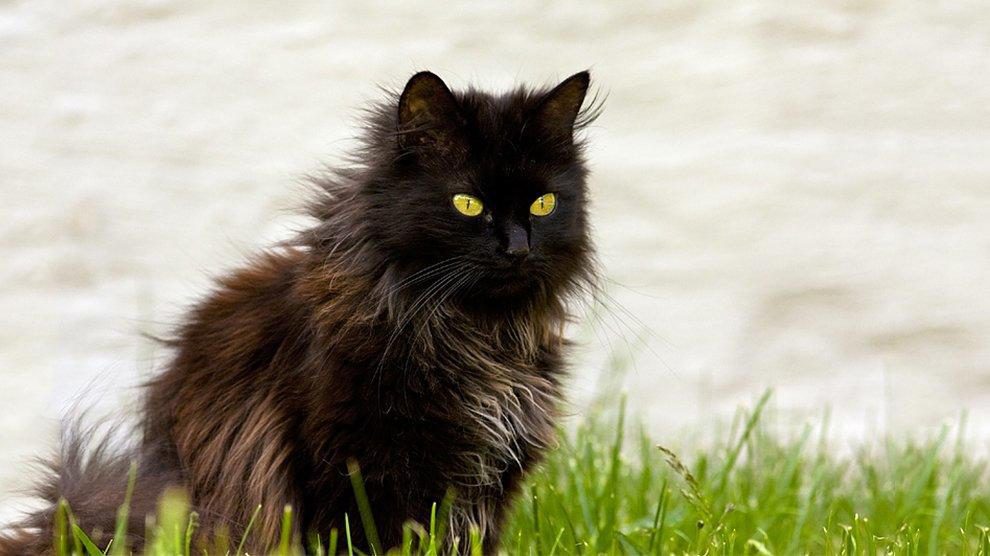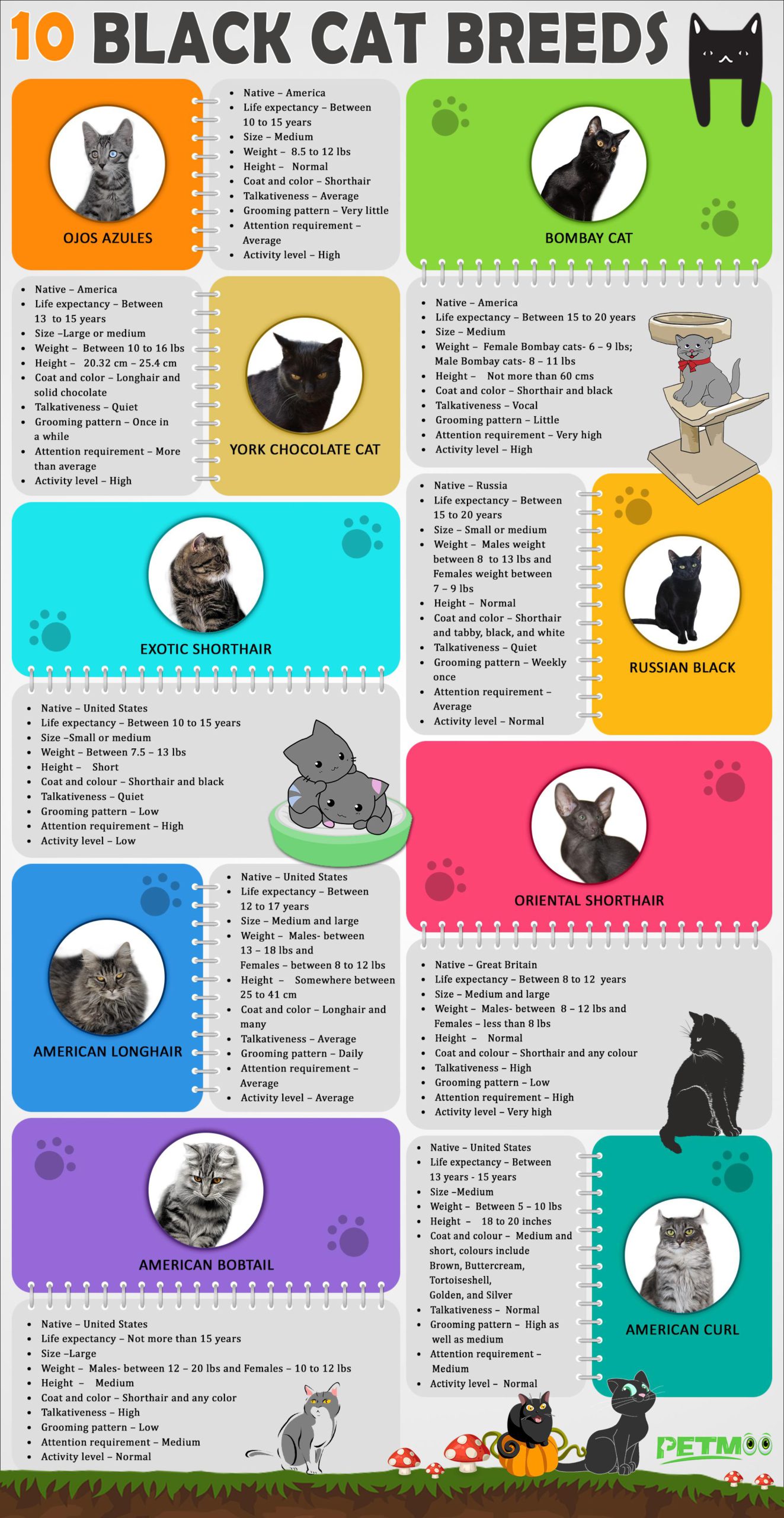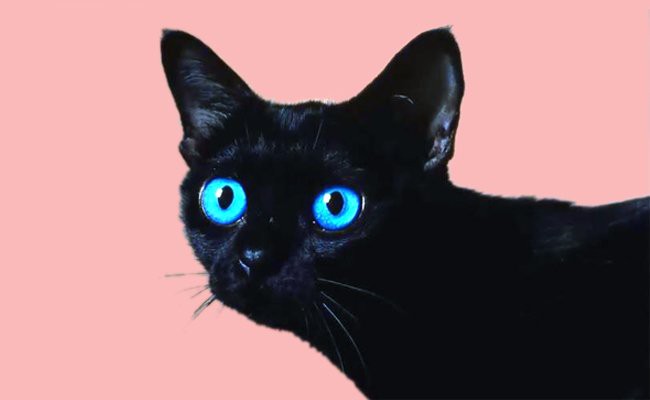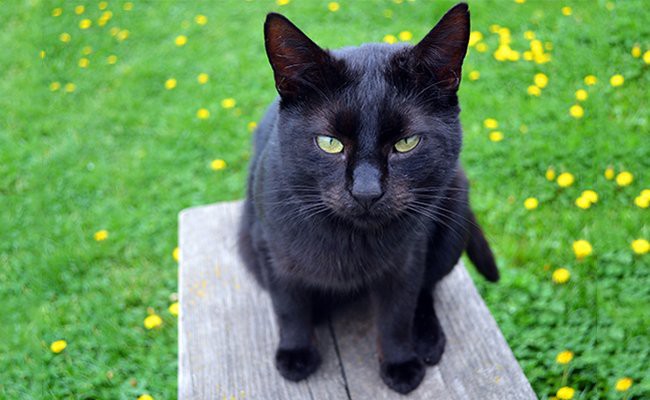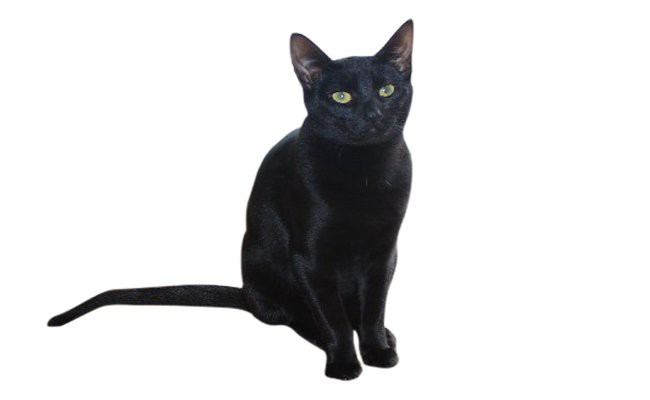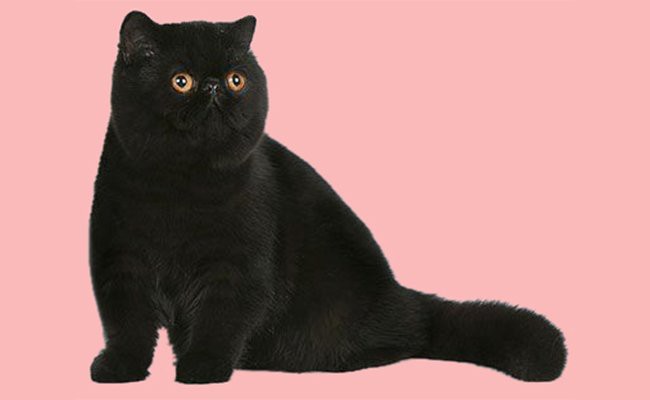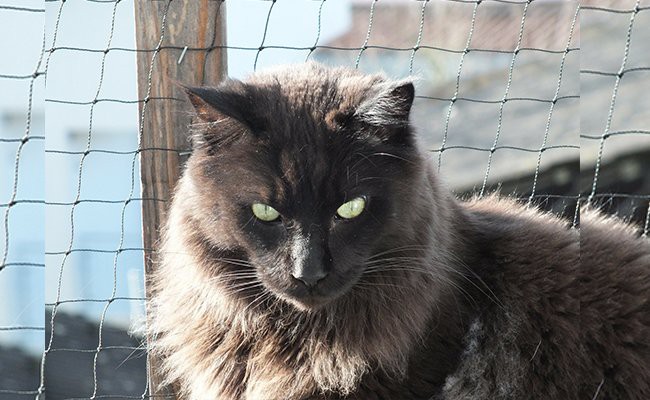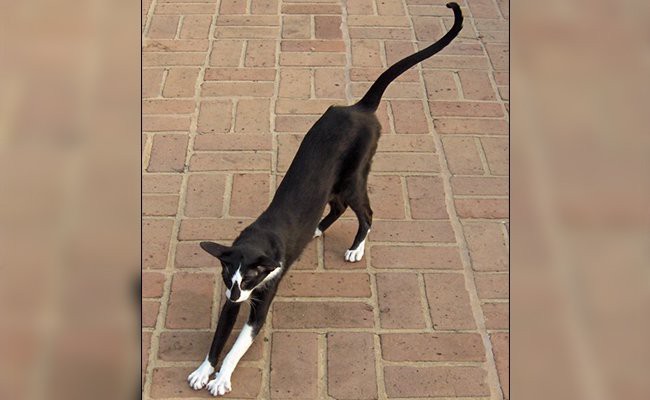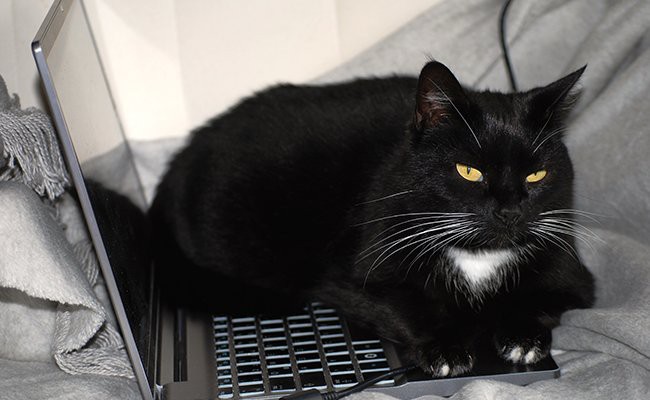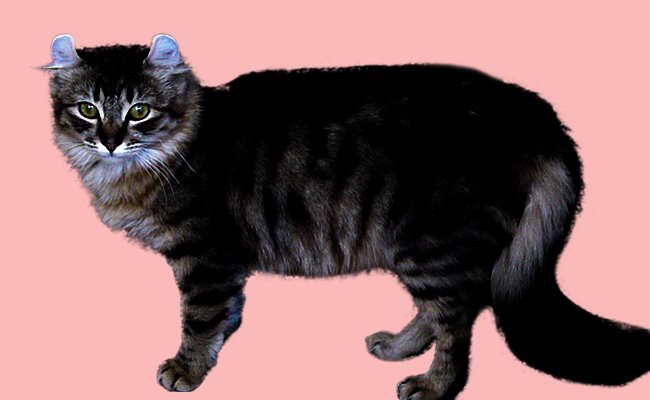Cat Pregnancy Calculator And Timeline
Hair-splitting 30% of black cats, beating all other colors, is given a lifeline for a new life by many cat-loving families.
Black cat breeds are known for their mysticism and superstition for centuries. In Germany, the locals believe that a black cat brings good luck if it crosses your path.
In Scotland, treating a black cat bodes highly well for your investment.
As per reports, black cat breeds and black kittens exhibit some of the best adoption rates amongst all cats that cat rescuers have witnessed in recent years.
However, this positive trend indicates that myths are set aside by a deep understanding of black cat breeds.
A black cat appeals to a cat-lover for various reasons. Here, let’s learn more different the various black cat breeds or breeds close to black color.
Ojos Azules
- Native – America
- Life expectancy – Between 10 to 15 years
- Size – Medium
- Weight – 8.5 to 12 lbs
- Height – Normal
- Coat and color – Shorthair
- Talkativeness – Average
- Grooming pattern – Very little
- Attention requirement – Average
- Activity level – High
Ojos Azules is of a kind rare cat with blue-eyes developed in America. In Spanish, “Ojos Azules” literally means “Blue Eyes.”
Ojos Azules Cat Appearance
The depth of these cats’ eyes is much greater than the Siamese cats. Moreover, this cat does not suffer from cross-eye, deafness, and squinting. Not to mention, the appearance is not connected to the cat’s coat color.
Ojos Azules features a unique and distinct appearance. Also, the presence of blue eyes is genetically impossible for black cat breeds. The blue color in this breed, ‘Ojos Azules’ occurs due to a genetic mutation.
The cat’s eye center may appear green, copper, and gold. The body looks somewhat stocky, well-boned, neither short nor long. The tail is proportionate in size to the body, and the hind legs are much longer.
Ojos Azules Cat Coat Color
The coat appears glossy, silky, soft, and also short. Furthermore, it’s effortless to maintain this cat. Generally, all colors appear in this variety. As a result, many cats have striking white markings.
Ojos Azules Cat Grooming
Yes, it’s quite simple to groom and manage: occasional cleaning and brushing should look good.
Ojos Azules Cat Temperament
As a matter of fact, this breed appears as a unique and rare one. So, a little detail is only known about them. On the other hand, Ojos Azules are very kind, friendly, and active.
Most Ojos Azules cats are docile and placid, and they love roaming indoors. Overall, these cats move along well with other animals and children except violent and boisterous dogs.
Ojos Azules Cat Health Problem
Being a rare cat breed, there are not many details about this cat’s health issues. All the health issues concerning this cat are very closely watched by a committee supervised by TICA.
Besides, the sustained efforts to breed this cat have resulted in a stillbirth and deformities. Especially, breeders must cross non-blue eyed ones with blue-eyed ones.
The blue-eyes’ presence in this breeding produces a litter with at least fifty percent blue-eyed kittens.
Ojos Azules Cat Interesting Facts
- Firstly, cats having dark blue eyes originated from New Mexico. Especially in 1984, the very first Ojos Azules named Cornflower was a tortoiseshell.
- This blue-eyed cat can be bred with cats without any traits.
- Ojos Azules cats suffer from a particular defect; these cats do not have melanin in their eyes.
- Considered as a scarce cat breed, in the year 1992, only 10 were recorded.
- However, current medical investigations revealed that cranial issues may be connected to the gene.
Bombay Cat
- Native – America
- Life expectancy – Between 15 to 20 years
- Size – Medium
- Weight – Female Bombay cats- 6 – 9 lbs; male Bombay cats- 8 – 11 lbs
- Height – Not more than 60 cms
- Coat and color – Shorthair and black
- Talkativeness – Vocal
- Grooming pattern – Little
- Attention requirement – Very high
- Activity level – High
Fondly called as “the Panther,” the beautiful Bombay, a cross between a Sable Burmese and American Shorthair. Originated in the year 1953, Bombay cats received acceptance into the prestigious CFA’s in 1976.
Bombay Cats Appearance
Specifically, Bombay cats have brilliant copper-colored eyes. It’s a cute medium-size breed featuring a graceful outline and a muscular body. Also, the legs of Bombay cats are neither too long nor short.
Also, these cats appear uniquely heavy. The head of a Bombay cat is round in shape, and notably, the muzzle appears fully-grown.
Furthermore, the round eyes look wide apart, and the eye color ranges from gold to copper. Additionally, the nose looks a bit foreshortened. And, the ears tilt slightly forward and are medium size.
Bombay Cats Coat Color
Bombay cats have shorthairs, and it is generally found in solid black. The coat appears shimmering with a velvety-touch, close-lying, and lustrous. Little grooming is required to keep them in a presentable condition.
Bombay Cats Temperament
To begin with, these cats have brilliant temperaments. Specifically, Bombay cats perform dual roles- active as well as an even-tempered cat. Very intelligent and playful, Bombay cats are loyal, affectionate, and people-friendly.
Besides, these cats love talking, but they are not talkative. Indeed, Bombay cats have a timid voice. In general, black cats expect attention, and they love receiving it.
Bombay Cats Health Problems
In general, all cats suffer from some form of genetic deformities. Indeed, Bombay cats are prone to eye tearing problems, breathing difficulties, dental disease, and cranial deformities.
Cranial Disorders (Burmese Head Defect)
Genetic trouble in these cats starts from the development of the head and facial sections around the fetus. Besides, craniofacial deformities appear from birth.
Importantly, cranial disorders are mostly autosomal recessive issues and are mainly linked with brachycephaly. Therefore, cats affected by this problem require an affectionate owner and continuous medical treatment.
Bombay Cats Interesting Facts
- Bombay cats feature excellent penny-eyes and a brilliant fluorescent golden color.
- In particular, the vast difference between the American Bombay and British Bombay lies in the color of their eyes.
- The American Bombay consists of copper, gold, or orange, whereas British Bombay’s have golden or green eyes.
- They are very energetic cats. Moreover, Bombay’s seek heat by lying close to their owners.
York Chocolate Cat
York Chocolate Cats Appearance
This medium to large size cat contains a muscular body. Firstly, the head appears rounded, and the muzzle looks somewhat lengthy. Also, the large pointed ears fall forward. Moreover, the eyes can be hazel, gold, and green.
Not to mention, the long tail uniquely tapers near the tip. Overall, the feet look well-tufted, and the appearance is quite similar to normal Siamese cats.
- Native – America
- Life expectancy – Between 13 to 15 years
- Size –Large or medium
- Weight – Between 10 to 16 lbs
- Height – 20.32 cm – 25.4 cm
- Coat and color – Longhair and solid chocolate
- Talkativeness – Quiet
- Grooming pattern – Once in a while
- Attention requirement – More than average
- Activity level – High

York Chocolate Cats Coat And Grooming
The York chocolate cat looks unusually soft, close-lying, silky, and long. Not to mention, the thin undercoat does typically not tangle or mat.
So, occasional grooming looks okay. Significantly, the plumed tail remains the main attractive feature of this breed.
At times, York chocolate cats also have a neck ruff. The different patterns and colors include lavender and white, chocolate and white, solid lavender, and solid chocolate.
York Chocolate Cats Temperament
Known as true lap cats, York chocolate cats love spending time cuddling with family members. The curious nature of York chocolate cats makes them follow you now and then. York chocolate cats prefer playing in the water.
Also, these cats get along with pets and children and usually energetic and intelligent. Being excellent hunters, they are among the best choices for people who prefer a cat like the Bengal.
York Chocolate Cats Health Problem
The York Chocolates are generally healthy cats, and there are at present no specific problems. In general, it’s believed that York Chocolates are also prone to typical ailments that disturb cats of various other breeds.
York Chocolate Cats Interesting Facts
- In the 80s, Janet Cheifari started the York Chocolate cat development program in America.
- As a result, Cheifari’s cat produced a litter full of cute lovely kittens.
- In fact, the ACFA and CFF recognized this “York Chocolates” as a new breed in 1990.
- Interestingly, these cats chose “one-individual” as a “special person.” However, they will continue to show affection to all family members.
- These cats also move well with children and always wish to sleep with this particular person.
Russian Black
- Native – Russia
- Life expectancy – Between 15 to 20 years
- Size – Small or medium
- Weight – Males weigh between 8 to 13 lbs and females weigh between 7 – 9 lbs
- Height – Normal
- Coat and color – Shorthair and tabby, black, and white
- Talkativeness – Quiet
- Grooming pattern – Weekly once
- Attention requirement – Average
- Activity level – Normal
Russian Black Cat Appearance
In general, these shorthair cats are initially from Russia. The Russian tabby, black, and white cats derived from Russian Blue share a similar physical appearance.
Russian Blacks are generally medium-sized, and they have a muscular, well-boned, elongated, and well-proportioned body. Besides, Russian Blacks feature a wedge-shaped kind of head along with a flat skull.
Moreover, Russian Blacks contain a solid chin and medium length nose. However, in the profile, the nose appears straight. Another critical point, Russian cats have distinct whiskers.
When these cats face trouble or express any excitement, the whisker pads puff up. Overall, the eyes are set widely in almond shape.
Russian Black Cat Coat And Grooming
The coat of these cats usually is dense, silky, plush, and soft. This cat has clear tipping, which provides a superior lustrous sheen. Moreover, the undercoat appears downy and fine. In terms of grooming, little grooming is sufficient.
Russian Black Cat Temperament
The Russian Blacks are very kind and gentle that will never appear tired of pleasing your family. However, they do not behave mischievously like other breeds. Yes, these cats are genetically sensitive, quiet, and intelligent.
In fact, Russian cats learn how to do certain things like opening doors or drawers. Additionally, these cats are very devoted and loyal, and they make good companions.
Russian Black Cat Health Problem
In general, the Russians are healthy and hearty cats. With good affection, veterinary care, exercise, and proper diet, these cats can survive well.
Russian Black Cat Interesting Facts
- Firstly, the GCCF and ACF do not recognize this breed as a separate breed.
- Moreover, the Russian Blue appears in black and white also.
- As a matter of fact, the ACFA identifies Russian Shorthairs in blue, black, and white.
- In England, Frances McLeod started breeding Russian Blacks and Russian Whites in the early 60s.
Exotic Shorthair
- Native – United States
- Life expectancy – Between 10 to 15 years
- Size –Small or medium
- Weight – Between 7.5 – 13 lbs
- Height – Short
- Coat and color – Shorthair and black
- Talkativeness – Quiet
- Grooming pattern – Low
- Attention requirement – High
- Activity level – Low
Exotic Shorthair Appearance
Another cat breed in stunning black, exoticcats is one of the most peculiar breeds. In other words, known as the best-known Persian for time-restricted people, the CFA calls this cat a unique one.
The physical characteristics of this breed are similar to Persians. In general, they have stocky, muscled, powerful, and a medium-sized frame. The Exotics feature a thick, short neck with well-spaced sharpness and a short nose.
Additionally, these cats have chubby cheeks, powerful jaws, and a strong chin.
Exotic Shorthair Coat And Grooming
The Exotic Shorthairs consists of a thick, dense coat quite longer than the other shorthair breeds. Typically, these appear in any pattern and color. In particular, grooming twice a week is enough to maintain the hair in an adequate capacity.
Exotic Shorthair Temperament
The Exotics have a calm personality, but they are definitely more active. Moreover, Exotics are also very friendly with dogs and other pets. These cats are seldom vocal, and you will hear a meow only occasionally.
Playful and curious, Exotics also prefer being in some company rather than staying alone. Also, they are loyal and very affectionate. However, the Exotics necessarily maintain a good energetic streak.
Therefore, they can be nimble mouse hunters if necessary.
Exotic Shorthair Health Problem
The Exotics are more prone to different genetic issues.
Polycystic Kidney Disease
PKD typically appears through various kidney-related disorders at around the age of seven. Some of the common signs associated with PKD include weight loss, Depression, vomiting, polyuria, polydipsia, and Lethargy.
In PKD, the cats suffer from multiple fluid-filled cysts inside the two vital organs. Mostly, the cysts are found at birth and continue to grow in size. The exact name your vet gives this disorder is “Autosomal Dominant PKD.”
Signs of PKD
The signs of PKD include typical kidney-related disease and failure. The growth of cysts will reduce filtration, which can cause abdominal pain and bladder complications.
Other symptoms of PKD include
- Presence of blood in diarrhea
- Ataxia
- Seizures, blindness, and weakness
- Anemia, high blood pressure, listlessness
- Poor hair coat, anorexia, weight loss
- Depression, vomiting, and polyuria
- Polydipsia
- Lethargy
Causes of PKD in cats
PKD is due to “autosomal dominant” genes that decide whether a kitten suffers from PKD or not. In other words, either the mother or father will carry this affected gene or pass it to the offspring.
Treatment of PKD in cats
As the cat ages, PKD also grows steadily, and there are no known treatments and cures. IV fluids or Potassium supplements are commonly administered to cats affected by PKD. In other words, PKD reduces the potassium level.
Also, the blood cells can get affected, resulting in iron deficiency.
Other health-related disorders
- Hypertrophic cardiomyopathy
- PRA (progressive retinal atrophy)
- Brachycephalic
Exotic Shorthair Interesting Facts
- The Exotic cat shares the name of being cautious around strangers and unknown persons.
- Especially, these cats prefer family members’ formal presence, and it’s better not to leave them alone.
- Furthermore, if you travel frequently, a pet-sitter looks inevitable.
- Suppose, if you prefer an animated and a playful cat, then the Exotic Shorthair is not the ideal choice.
- Moreover, Exotic Shorthairs are one of the most delicate lap cats.
Chantilly-Tiffany
Chantilly-Tiffany Appearance
Always seen as a longhair cat, Chantilly-Tiffany features boning, musculature, and a long body.
The head appears medium in size and contains high and broad cheekbones, a gently sloped nose, and a broad muzzle.
Besides, the eye appears amber, yellow, and gold.
Also, the ears have rounded tips and are medium in size. Not to mention, the tail looks well-plumed, long, and thick.
- Native – United States
- Life expectancy – Between 14 to 16 years
- Size – Medium
- Weight – Males- between 8 to 12 lbs and females – between 7 to 10 lbs
- Height – Medium
- Coat and color – Soft, silky, and long and black
- Talkativeness – High
- Grooming pattern – High
- Attention requirement – High
- Activity level – Medium

Chantilly-Tiffany Coat And Grooming
The Chantilly consists of a fine, smooth, and silky coat. Also, these cats are not prone to matting, just like Birmans. The ear streamers and neck ruffs are elegant and distinctive.
They require occasional grooming. Specifically, Chantilly comes in fawn, lilac, cinnamon, chocolate, black, and blue colors. White spotting in Chantilly is not allowed. Moreover, some Chantilly-Tiffanys’ contain an overgrown coat.
Chantilly-Tiffany Temperament
Chantilly-Tiffany’s are neither mischievous nor over-demanding. They are, in fact, intelligent, affectionate, friendly, and loyal. In general, a Chantilly-Tiffany appears livelier than Persians.
Also, these cats can be described as “Moderate.” These cats require human companionship, and they even move well with pets and other children.
Chantilly-Tiffany Health Problem
- The Tiffany cat suffers from wax build-up in the ears. Therefore, you need to clean their ears at least once a week.
- Other than this, as part of a routine checkup, Tiffany’s digestion problem must also be taken into consideration.
- For owners who are keen to breed, keep in mind prolonged labor, and a good nursing
- All in all, the queen requires a full eight weeks. And the shedding period of Tiffany is minimal, and people with allergies can manage with this breed.
Chantilly-Tiffany Interesting Facts
- In 1969, the Chantilly started its first set of litters in New York.
- Soon, the Chantilly-Tiffany became the masses’ darling, and additional breeding programs were started in Canada and Florida.
- The Chantilly requires playing, as well as running. Moreover, interactive exercises are necessary for this cat’s overall growth.
- At first, this breed was known as “Foreign Longhair colors
American Longhair
- Native – United States
- Life expectancy – Between 12 to 17 years
- Size – Medium and large
- Weight – Males- between 13 – 18 lbs and females – between 8 to 12 lbs
- Height – Somewhere between 25 to 41 cm
- Coat and color – Longhair and many
- Talkativeness – Average
- Grooming pattern – Daily
- Attention requirement – Average
- Activity level – Average
American Longhair Appearance
The American Longhair cat breed came into existence due to a wrong experiment. The breeders attempted to create an American Shorthair having the green eyes and shimmering coat of a Persian. However, they consist of a leaner body and shorter skin.
Also, this breed’s physical features are based on its trait; for instance, certain cats have a shortened muzzle than the rest. Finally, this cat features a well-proportioned and well-balanced appearance. In fact, females are smaller than males.
American Longhair Coat And Grooming
These cats have a plush, soft coat and come in different patterns and colors. Moreover, it’s somewhat shorter and thinner than other longhair coat cats. Since these cats are tough groomers, it’s advised to keep them clean daily.
Not to mention, you bathe these cats once every seven days.
American Longhair Temperament
The American Longhairs have inherited an undemanding, affectionate, and rational nature of the Persians. Furthermore, these cats remain more lively and active than their cousins.
Being people friendly, the American Longhairs are intelligent enough to wrap their paws around humans. Overall, this cat breed rarely quarrels and usually moves well with small kids and other pets.
American Longhair Health Problem
These cats are known for their robust health. However, they are known to suffer from
- Feline hypertrophic cardiomyopathy (FHC) – One of the most prevalent heart diseases witnessed in felines, FHC is an autosomal dominant condition. Being a progressive disease, this disorder causes paralysis and also results in severe heart failure in some cases.
- Spinal muscular atrophy (SMA) – Another genetically passed disease which destroys the spinal cord neurons, SMA causes muscle weakness. In general, a simple test is conducted to correctly identify the genes causing SMA.
- Hip Dysplasia- This abnormality causes arthritis and crippling lameness. The most vulnerable breeds that succumb to this disorder are Maine Coons and Persians.
- PKD or Polycystic Kidney Disease – In this disorder, multiple fluids containing cysts multiply inside the kidney and destroy functional tissue. Also, PKD looks to be a general misnomer in American Longhairs. Although the exact clinical relevance and nature of renal problems in Maine Coons appear unclear, its pre-breeding screening is recommended.
American Longhair Interesting Facts
- The American Longhairs appear in different colors, but grey tabby looks common.
- These cat breeds sometimes have an extra toe.
- Especially, with dogs and horses, American Longhairs move along nicely.
- Other names of this breed include American Forest Cat, American Coon Cat, American Longhair, Snowshoe Cat, and Maine Coon cat.
- In 1793, before Marie Antoinette was executed, she tried to escape France and her Turkish Angora cats.
- It’s believed that her cats somehow reached Maine in America and later developed into Maine Coon breed.
Oriental Shorthair
- Native – Great Britain
- Life expectancy – Between 8 to 12 years
- Size – Medium and large
- Weight – Males- between 8 – 12 lbs and females – less than 8 lbs
- Height – Normal
- Coat and color – Shorthair and any color
- Talkativeness – High
- Grooming pattern – Low
- Attention requirement – High
- Activity level – Very high
Oriental Shorthair Appearances
They have a small or medium-sized body with a distinct appearance and a svelte body frame. Moreover, the Oriental Shorthairs and the Oriental Longhairs differ only in the size of the fur.
The head looks like a tapering wedge with long ears and muzzle. Besides, the eyes look slightly slanted and are almond-shaped. In particular, the tail and paws are long. Primarily, there are two different types of this breed- the traditional and extreme.
Overall, the traditional Oriental features a solid body type and a rounded head.
Oriental Shorthair Coat And Grooming
The Oriental Shorthair contains a close-lying, satin-like, soft, and short coat. However, these breeds require little grooming. In all honesty, any patterns and colors are available, including tabby, bicolor, smoke, shaded, and solid.
Oriental Shorthair Temperament
Oriental Shorthairs are those dexterous and active cats that never miss a live moment with their owners. Being quite intelligent, Oriental Shorthairs are easily trained to fetch.
Also, the athletic body of these cats will enable them to play for hours without any rest. Suppose, if you spend plenty of time outside your home, it’s best to select some other cat breed.
Finally, Oriental Shorthairs sounds much milder than the ever-popular Siamese.
Oriental Shorthair Health Problem
Just like their Longhairs counterpart, Oriental Shorthairs are healthy and robust cats. If maintained indoors, they are known to survive at least 15 years. But some of the cat breeds are prone to dilated cardiomyopathy and liver amyloidosis.
Moreover, Oriental Shorthairs can also suffer from gingivitis, tartar formation, and plaque build-up.
Oriental Shorthair Interesting Facts
- This breed never requires bathing unless and otherwise, they overturn a paint can.
- Oriental Shorthairs can be described as a very social breed. They will get jealous if you fail to spend quality time with them.
- One of the most attractive and colors cats, their hues and patterns are much more diverse than most breeds.
- In all honesty, these cats appear in around 300 color combinations and patterns.
- Some of the popular Orientals include chocolate, cream, white, silver, bicolored, and tabby.
American Bobtail
- Native – United States
- Life expectancy – Not more than 15 years
- Size –Large
- Weight – Males- between 12 – 20 lbs and females – 10 to 12 lbs
- Height – Medium
- Coat and color – Shorthair and any color
- Talkativeness – High
- Grooming pattern – Low
- Attention requirement – Medium
- Activity level – Normal
American Bobtail Appearance
American Bobtails are a bright cat that consists of a distinctive look. They are extremely communicative with their admirable family members.
With substantial rectangular medium to larger bodies, they have the short, expressive, and flexible tail. Besides, the tail of this cat appears naturally bobbed. When this cat feels alert, its tail shoots up straight.
In overall looks, this cat resembles a distinct wild bobcat. Also, it’s a slow maturing cat breed that takes 2 or 3 years.
American Bobtail Coat And Grooming
This cat breed comes in different color patterns and colors. Their coat is water-proof irrespective of the length.
American Bobtail Temperament
Despite its rugged wild appeal, the American Bobtails are highly adaptable, highly intelligent, and friendly. In temperament, they are often described as “dog-like” animals in appearance.
Bobtails are supremely kind and loyal to their owners. They are known for their penchant for travel. Additionally, American Bobtails are well mannered and are remarkably sensitive to good behavior.
American Bobtail Health Problem
In fact, Bobtails are easily susceptible to hip dysplasia. Hip dysplasia refers to a condition wherein the hip joints are affected by arthritis, lameness, and crippling. Naturally, some bobtails can be seen without tails.
In general, Bobtail cats that do not have tails are called “rumpies.” Overall, rumpies are not suitable for breeding due to their health problems.
Note – Before purchasing a kitten or cat from a breeder, you must first inquire about all the health issues. Bear in mind, with good veterinary care, these cats can survive up to 15 years.
American Bobtail Interesting Facts
- Due to their affectionate nature, American Bobtails also serve as good therapy cats. They are very sensitive to other people’s needs and mixed with their distinct features, they spread happiness.
- Called the “Houdini cat,” American Bobtails are known to escape any situation.
- They are always in demand for their lovable, intense loyalty, and warm personality.
- American Bobtails are known to possess a genetic mutation. Thus, the shortened tail is due to this genetic mutation.
- According to reports, these cats are a crossing between a wild bobcat and a domestic tabby.
American Curl
- Native – United States
- Life expectancy – Between 13 years -15 years
- Size –Medium
- Weight – Between 5 – 10 lbs
- Height – 18 to 20 inches
- Coat and color – Medium and short, colors include Brown, Buttercream, Tortoiseshell, Golden, and Silver
- Talkativeness – Normal
- Grooming pattern – High as well as medium
- Attention requirement – Medium
- Activity level – Normal
American Curls Appearance
This good-muscled cat, American Curls, has a long body. These cats have medium-sized bones despite their body length. In addition, American Curls have almond-shaped eyes and a wedge-shaped head.
They also have a long tail, and their ears curl backward. Their ears appear large and look curve at around 90 degrees. Moreover, natural fur is apparent, and ear tips can be flexible.
American Curls Coat And Grooming
The coat pattern looks silky, and the hair length looks more semi-long. Furthermore, the American Curls are available in patterns and colors. The longhaired American Curls consists of a plumed tail.
Yes, the ears, not to mention, are the most attractive feature. Straight at birth, and they start to curl back soon after some days. In fact, the ear curl, uncurls, and once again curls. The tips are generally flexible and rounded, often filled with fur tufts.
Finally, when Curls appear alert, their ears jerk forward, but the tips always point to the skull base.
American Curls Temperament
The temperament of this cat is amazingly nothing short of brilliance. These cats love being interactive and love spending time in every way possible.
Besides, they are friendly, adapt well, and easy-going cats. Oddly and faithful, Curls follow humans to see what they are up to. American Curls are not talkative like some of the other breeds, and they opt for cooing and trilling.
These cats always remain kittenish well throughout their entire lives. Also, they are engaging in cats with dynamic personalities.
American Curls Health Problem
Both mixed-breed and pedigreed cats enjoy varying incidences of troubles that can be genetic. All in all, American Curls are notably healthy, but some lines consist of narrow ear canals, which cause ear infections.
American Curls Interesting Facts
- Unlike other cat breeds that support flexible and soft cartilage, the American Curls have strong cartilages.
- They have signature ear furnishings in almost various patterns and color combinations.
- In all honesty, American Curls are considered the youngest breeds in the feline world.
- Rightly discovered in June 1981, in California, the first American Curl named Shulamith later gave birth to a group of kittens.
- These cats are widely known for their mischievous behavior. American Curls open closed cabinets and doors with their paws.
- Moreover, this cat adores a nice head-butt all the way.

